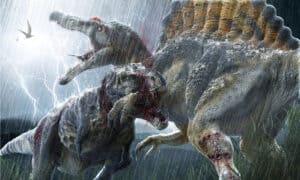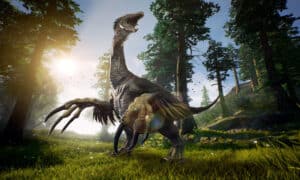Key Points:
- The state of Minnesota acquired its official state fossil in the year 2022, only very recently.
- There is only scant proof of the existence of three dinosaur species that lived in Minnesota.
- The American Mastodon, Woolly Mammoth, Musk Oxen, and Giant Beaver are known to have roamed Minnesota.
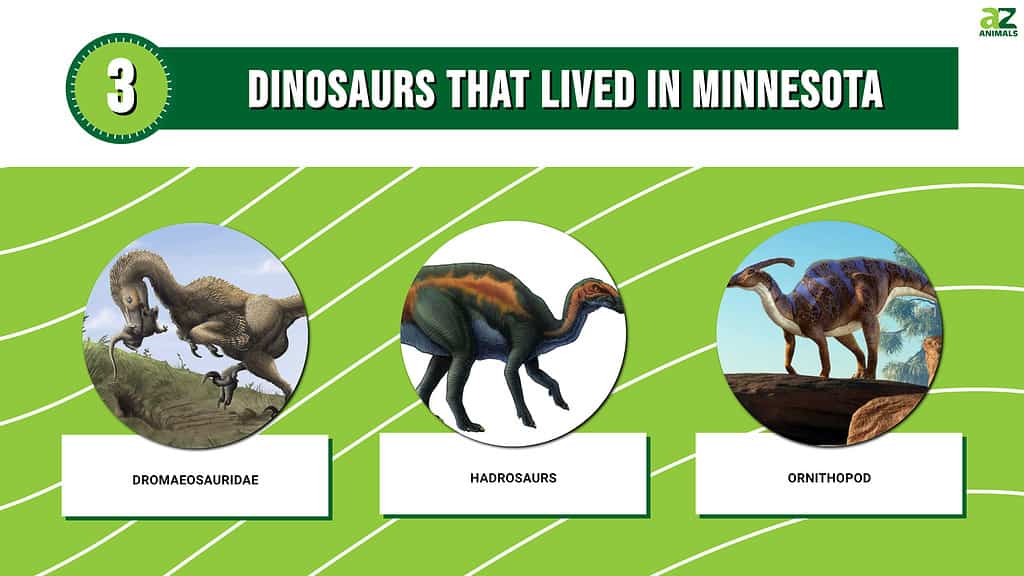
Like many other northern areas of the United States, scant evidence exists of dinosaurs that lived in Minnesota. After all, a great deal of the state was underwater throughout the time when dinosaurs roamed the land, and glacier encroachment ruined fossil records of the times when the area was dry. Without proper sediment retention, fossil formation is impossible.
Also, many of the Cretaceous Era deposits are simply unreachable these days, making it harder to find evidence of dinosaurs.
While it’s difficult to find the fossils of dinosaurs that lived in Minnesota, at least three different types of dinosaurs have been found in the state in recent centuries. Let’s see what fossils have been found in this state and where you can see them today!
What Is Minnesota’s State Dinosaur?
Minnesota does not have a state fossil. Furthermore, Minnesota only recently obtained its state fossil in 2022. A 2021 campaign to choose a state fossil ended with the people of the state voting for the giant beaver, Castorioides ohioensi.
Scientists have recovered the fossils of this beastly beaver throughout Minnesota. Based on the specimens, this mammal weighed over 200 pounds, grew 6 to 7 feet long, and had teeth that measured about 6 inches in length! Although very little evidence of dinosaurs that lived in Minnesota exists, the people could name a state dinosaur based on the three genera that have been found within the borders.
What Are the 3 Dinosaurs That Lived in Minnesota?
Minnesota has evidence of only three different dinosaurs that once roamed the state. The evidence of these creatures is scant and comes in the form of fossilized teeth and a few vertebrae.
Interestingly, some of the dinosaurs that were found in this state may not have been dinosaurs that lived in Minnesota. Scientists believe that some of the remains found in the state were from elsewhere. They may have been borne into the state by glacier movement or washed into the area via the Western Interior Seaway that once split North America.
1. Dromaeosauridae
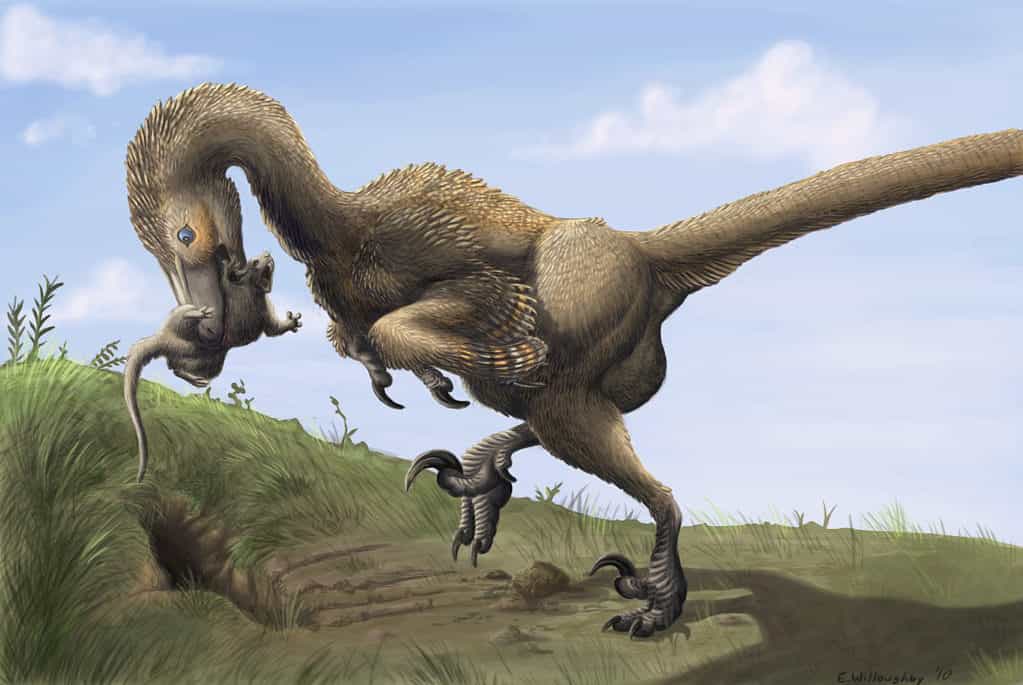
The Saurornitholestes genus of dinosaurs belonged to the Dromaeosauridae family.
©Ferahgo the Assassin/Wikimedia Commons – License
The dinosaur family Dromaeosauridae is filled with small carnivorous theropods known for using swift bipedal locomotion to hunt down their prey. Velociraptors belong to this family, but that is probably not the dinosaur that left behind fossil evidence in Minnesota.
Instead, paleontologists could only place the creature in this family based on a 1-inch claw, a serrated tooth, and a piece of vertebrae found in the Hill Annex Mine in the Iron Range in 2015.
2. Hadrosauridae
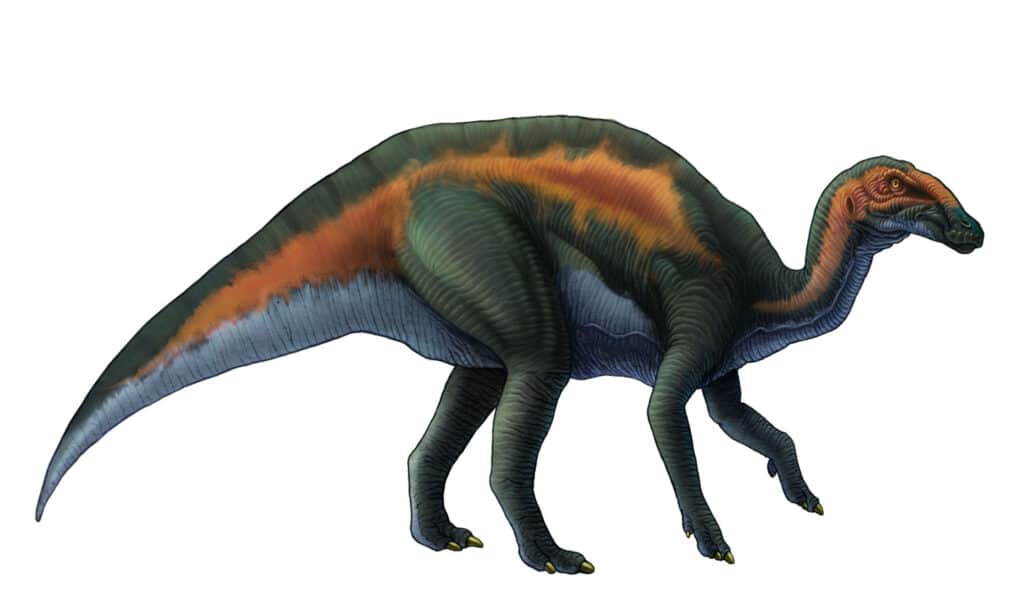
Hadrosaurs were duck-billed dinosaurs.
©Bee_acg/Shutterstock.com
An unidentified member of Hadrosauridae is frequently referenced as another type of fossil discovered in the Dakota Formation in Minnesota. Hadrosaurs were duck-billed dinosaurs. These herbivores could be small, medium, or even somewhat large depending on the species. However, the fossil evidence of these creatures is limited, so we don’t know what species of Hadrosauridae lived in this area, only the family.
3. Ornithopod

A Parasaurolophus, a herbivorous ornithopod dinosaur, Family Hadrosaur.
©iStock.com/Daniel Eskridge
The only evidence of ornithopods in Minnesota is footprints from an exposure of the Dakota Formation in Minnesota. While these trace fossils are referenced in literature, little has been written about where they were recovered. Nobody has speculated about the species that left the trace fossils, either.
All in all, very little fossil evidence of dinosaurs that lived in Minnesota exists. Yet, some of the proof that has been discovered was recently uncovered. Those discoveries provide hope that paleontologists or citizens will find dinosaurs fossils in the future.
What Prehistoric Creatures Lived in Minnesota?
Although we don’t know much about the dinosaurs that lived in Minnesota, scientists have found evidence of interesting fauna that once lived in the area. Take a look at some of the prehistoric animals that once called Minnesota home.
1. American Mastodon
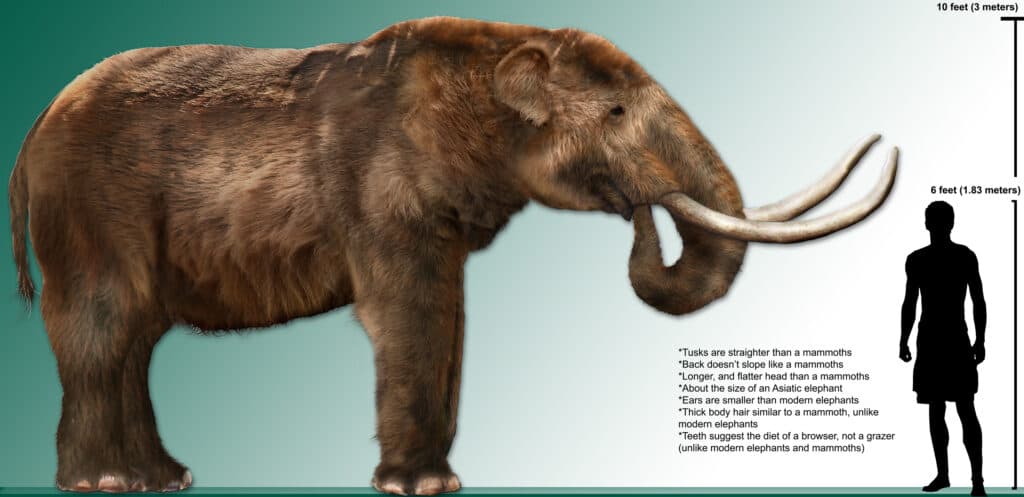
The American mastodon was a very large mammal.
©CC BY 3.0 / Dantheman9758 – License
The American mastodon was a large creature that lived for millions of years until somewhat recently, 11,000 to 10,000 years ago. The time of their demise coincided with the arrival of humans to North America and widespread climate change.
The American mastodon was a very large mammal that stood nearly 10 feet tall and weighed about 10,000 pounds or far more depending on the estimate. They are known for their very long tusks that grew up to 8 feet long.
2. Woolly Mammoth
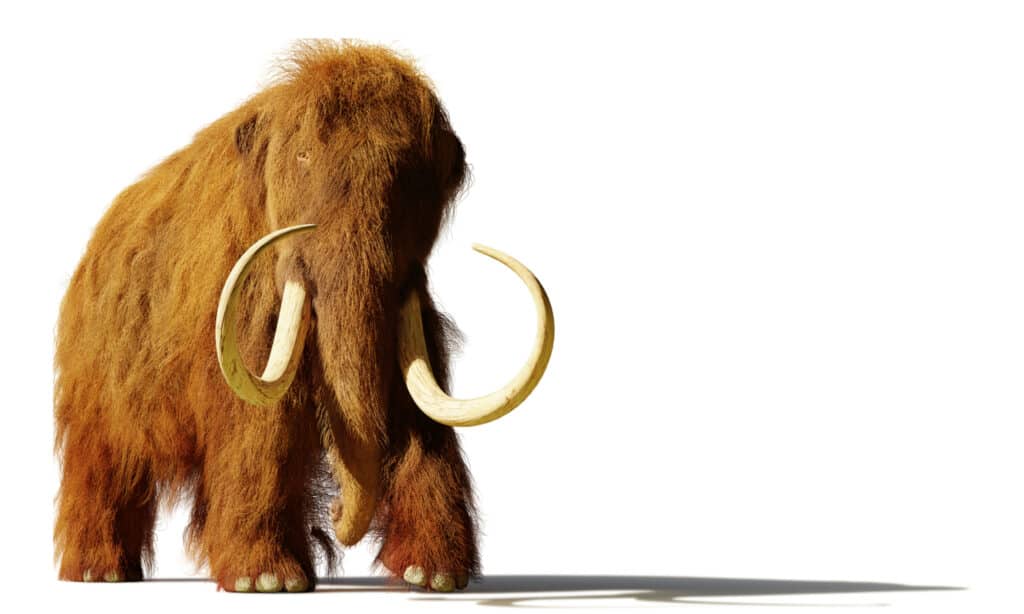
Mammoths grew to a height of 11 feet.
©Dotted Yeti/Shutterstock.com
Wooly mammoths were also large elephant-like creatures that lived until about 10,000 years ago when they started to go extinct. Their demise is largely pinned on climate change rather than human interactions. Like the American mastodon, these mammals were big. They stood about 11 feet tall at their utmost and weighed up to 13,000 pounds.
3. Musk Oxen
Musk Oxen also lived in Minnesota until the last few centuries. They were hunted throughout North America during the 19th and 20th centuries. Yet, efforts to help the population recover were undertaken throughout the late 20th century. While a herd of musk oxen was once kept at the Minnesota Zoo, the zookeepers found that the summer weather was too warm to keep the mammals.
4. Giant Beaver
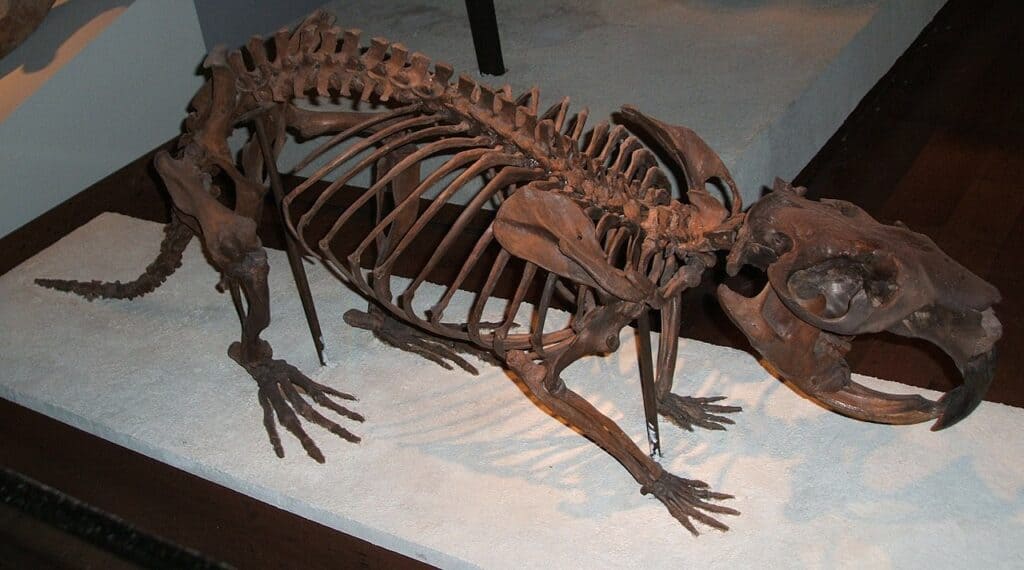
The skeletal remains of the giant beaver show the immense size of the creature.
©Steven G. Johnson / CC BY-SA 3.0 – License
The giant beaver is the state fossil of Minnesota. These gigantic creatures could weigh about 200 pounds and grow between 6 and 7 feet long! These creatures also went extinct about 10,000 years ago, probably because of the rapidly changing climate and competition with other animals.
Where Can You See Fossils of Dinosaurs That Lived in Minnesota?
A great spot to see fossils of dinosaurs and other animals in Minnesota is the Science Museum of Minnesota. Although you won’t see the small bits of evidence of dinosaurs that lived in Minnesota there, you can still see borrowed exhibits of dinosaur fossils, petrified wood, and recreations of the dinosaurs that once roamed other parts of the country.
The museum is located in Saint Paul. It’s open every day of the week except Monday. From Tuesday to Thursday, the hours are 10 a.m. to 5 p.m. On Friday and Saturday, the hours are 10 a.m. to 8 p.m. On Sunday, the hours are 10 a.m. to 5 p.m.
The museum has far more than dinosaur fossils, though. You can take a look at the website and plan an entire trip around the museum’s offerings.
Summary of 3 Dinosaurs That Lived in Minnesota
| Name of Dinosaur | Family | Location Where Found |
|---|---|---|
| Dromaeosauridae | Dromaeosauridae | Hill Annex Mine in the Iron Range |
| Hadrosauridae | Hadrosauridae | Dakota Formation |
| Ornithopod | Hadrosauridae | Dakota Formation |
The photo featured at the top of this post is © Noiel/Shutterstock.com
Thank you for reading! Have some feedback for us? Contact the AZ Animals editorial team.



